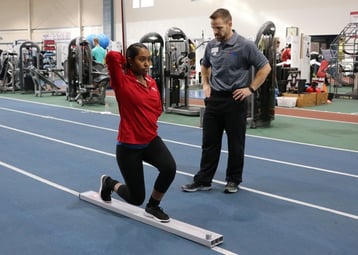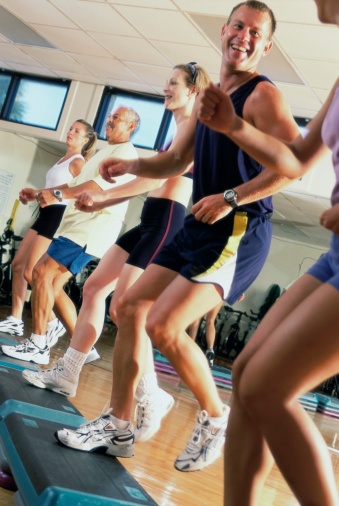 As university life picks up speed, maintaining a balanced diet can often fall by the wayside. Between classes, study sessions, and social activities, it’s easy to grab whatever is convenient. However, good nutrition is essential not only for keeping your energy levels up but also for enhancing your academic performance, supporting mental focus, and maintaining overall health. Here are some practical tips on stocking your dorm or apartment with nutritious, affordable, and convenient foods.
As university life picks up speed, maintaining a balanced diet can often fall by the wayside. Between classes, study sessions, and social activities, it’s easy to grab whatever is convenient. However, good nutrition is essential not only for keeping your energy levels up but also for enhancing your academic performance, supporting mental focus, and maintaining overall health. Here are some practical tips on stocking your dorm or apartment with nutritious, affordable, and convenient foods.
Power Up with Protein
Protein is key for staying full and supporting muscle recovery, especially if you’re hitting the gym. Here are a few budget-friendly, protein-rich foods that are easy to store and prepare:
-
Greek Yogurt: A versatile, protein-rich option, Greek yogurt is great for breakfast or a post-workout snack. Choose plain varieties to avoid added sugars, and mix in fresh fruit or granola for added flavor and nutrients.
-
Canned Tuna or Salmon: These are affordable, shelf-stable sources of protein. Mix with light mayo, mustard, and veggies for a quick meal, or stuff into a whole-grain pita.
-
Eggs: Eggs are a cost-effective protein source. Hard boil a batch at the start of the week for easy grab-and-go snacks, or cook up an omelet loaded with veggies for a nutritious meal.
Color Your Plate
Including a variety of colorful fruits and vegetables in your diet ensures you’re getting a range of vitamins, minerals, and antioxidants. Here are some options that are easy to keep on hand:
-
Baby Carrots and Hummus: A crunchy, satisfying snack that pairs well with hummus, which also provides a bit of protein and fiber.
-
Frozen Berries: Just as nutritious as fresh, frozen berries are perfect for smoothies, yogurt toppings, or thawing for a quick snack.
-
Spinach and Mixed Greens: Pre-washed greens are a convenient base for salads or can be added to sandwiches, wraps, or smoothies for an extra nutrient boost.
Quick and Easy Meal Ideas
When time is tight, having simple meal options can help you avoid less healthy choices:
-
Overnight Oats: Combine rolled oats with Greek yogurt or milk and add your favorite toppings like nuts and berries. Prepare it the night before for a quick, ready-to-eat breakfast.
-
Protein Smoothies: Blend protein powder, spinach, frozen berries, and a banana with milk for a quick, nutritious meal.
-
Whole-Grain Wraps: Keep whole-grain tortillas on hand for easy wraps. Fill with lean protein like turkey, mixed greens, and veggies, and add a spread of hummus or avocado for healthy fats.
Budget-Friendly Tips
Eating well on a budget is possible with a few smart strategies:
-
Buy in Bulk: Bulk items like oats, rice, and nuts are often cheaper and can be stored for long periods.
-
Shop Seasonal Produce: Seasonal fruits and vegetables tend to be less expensive and more flavorful. Check out local markets or the produce section for deals.
-
Frozen Options: Frozen fruits and vegetables are often more affordable than fresh and retain their nutritional value. They’re perfect for quick, healthy meals.
By keeping your dorm or apartment stocked with these nutritious, budget-friendly options, you’ll be better prepared to fuel your body and mind for the demands of university life. Remember, healthy eating doesn’t have to be complicated or expensive—a little planning can go a long way.
For more nutrition, overall health, and fitness tips, be sure to subscribe to our blog!




 Getting old sucks. That’s right, I said it: getting old sucks. I might be the only one in the fitness world to say it, but it does. I know I’m supposed to be positive about the inevitable passing of time and what each of us face in our journeys—and I’m positive it is not fun at all. No matter whether you are turning 20 or 70, we are all getting older and it is getting old! If you can’t tell by now, I am a bit grumpy about some of the aspects that each passing birthday has in store; and much like Ebenezer Scrooge, I say, “Bah humbug” to it all!
Getting old sucks. That’s right, I said it: getting old sucks. I might be the only one in the fitness world to say it, but it does. I know I’m supposed to be positive about the inevitable passing of time and what each of us face in our journeys—and I’m positive it is not fun at all. No matter whether you are turning 20 or 70, we are all getting older and it is getting old! If you can’t tell by now, I am a bit grumpy about some of the aspects that each passing birthday has in store; and much like Ebenezer Scrooge, I say, “Bah humbug” to it all!
 It’s the end of the day. There was a string of meetings to attend, a pile of emails to answer, an argumentative colleague to work with, maybe even kids yelling for pizza when you had chicken planned for dinner instead. By the time you get home, you’ve already made a plethora of decisions, from how to approach a problem at work to what shoes to wear on your way out the door. You told yourself you would exercise when you got home, but now the couch looks a lot more enticing. All those decisions you made have taken a biological toll on your motivation and self-control, whether you realize it or not.
It’s the end of the day. There was a string of meetings to attend, a pile of emails to answer, an argumentative colleague to work with, maybe even kids yelling for pizza when you had chicken planned for dinner instead. By the time you get home, you’ve already made a plethora of decisions, from how to approach a problem at work to what shoes to wear on your way out the door. You told yourself you would exercise when you got home, but now the couch looks a lot more enticing. All those decisions you made have taken a biological toll on your motivation and self-control, whether you realize it or not. Think for a minute. When was the last time you intended to go to bed early only to “check your feed” one last time, then suddenly—BAM!—you have lost 30 minutes to Facebook? Or when you were talking with a friend only to be distracted by the all-too-familiar “bing” of your phone alerting you to a new message that you just had to peek at?
Think for a minute. When was the last time you intended to go to bed early only to “check your feed” one last time, then suddenly—BAM!—you have lost 30 minutes to Facebook? Or when you were talking with a friend only to be distracted by the all-too-familiar “bing” of your phone alerting you to a new message that you just had to peek at? “Stand up straight!” and “Don’t slouch!” are just a couple of variations on the same advice we’ve all likely heard at least once. I apologize if I’m bringing up bad memories of being scolded for less-than-perfect posture, but this read might give you a few reasons why those remarks might have been useless after all. That’s right, folks. We’re diving into the widely covered topic of posture: What it is, whether there is such a thing as “good” posture, and what you can do to optimize your posture at any given point.
“Stand up straight!” and “Don’t slouch!” are just a couple of variations on the same advice we’ve all likely heard at least once. I apologize if I’m bringing up bad memories of being scolded for less-than-perfect posture, but this read might give you a few reasons why those remarks might have been useless after all. That’s right, folks. We’re diving into the widely covered topic of posture: What it is, whether there is such a thing as “good” posture, and what you can do to optimize your posture at any given point. If you’re generally healthy and pain-free, you can consult with a competent trainer to do some sort of an assessment on your strategies for movement. Each individual uses preferred methods to assess movement, whether that is a
If you’re generally healthy and pain-free, you can consult with a competent trainer to do some sort of an assessment on your strategies for movement. Each individual uses preferred methods to assess movement, whether that is a 
 Most of us are aware that the number of Americans diagnosed with diabetes is increasing, but so is the number of us at risk.
Most of us are aware that the number of Americans diagnosed with diabetes is increasing, but so is the number of us at risk.  “Our mindset” refers to every individual who has ever had one slice of pizza too many and subsequently tortured themselves on the treadmill because of it. Exercise is not punishment and should not be viewed as such. If you consistently and begrudgingly plan your workout routine around your indulgences, fitness becomes an irrational afterthought. A healthy lifestyle includes both enjoying the sweeter (or more savory) things in life, as well as enjoying a sweat session for the benefits of fitness. Your body is built to be listened to, and practicing a balanced lifestyle will help you reap not only better health, but also performance benefits.
“Our mindset” refers to every individual who has ever had one slice of pizza too many and subsequently tortured themselves on the treadmill because of it. Exercise is not punishment and should not be viewed as such. If you consistently and begrudgingly plan your workout routine around your indulgences, fitness becomes an irrational afterthought. A healthy lifestyle includes both enjoying the sweeter (or more savory) things in life, as well as enjoying a sweat session for the benefits of fitness. Your body is built to be listened to, and practicing a balanced lifestyle will help you reap not only better health, but also performance benefits.